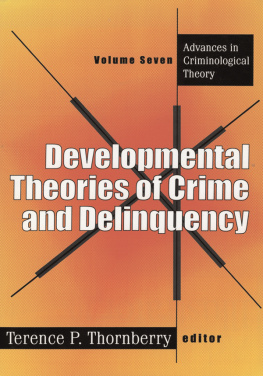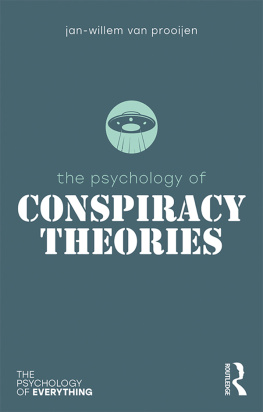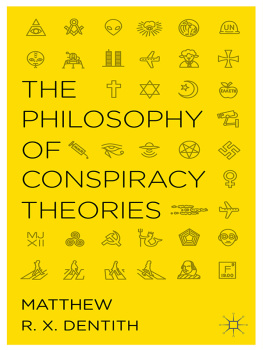The editor and publishers wish to thank the following for permission to use copyright material.
American Society of Criminology for the essays: Robert Agnew (1992), Foundation for a General Strain Theory of Crime and Delinquency, Criminology, 30, pp. 47-87; Thomas J. Bernard (1990), Angry Aggression among the Truly Disadvantaged, Criminology, , pp. 73-96; Jody Miller (1998), Up It Up: Gender and the Accomplishment of Street Robbery, Criminology, 36, pp. 37-65; Eric P. Baumer and Regan Gustafson (2007), Social Organization and Instrumental Crime: Assessing the Empirical Validity of Classic and Contemporary Anomie Theories, Criminology, 45, pp. 617-63.
American Sociological Association for the essay: Albert K. Cohen (1965), The Sociology of the Deviant Act: Anomie Theory and Beyond, American Sociological Review, 30, pp. 5-14.
Elijah Anderson for the essay: Elijah Anderson (1994), The Code of the Streets, Atlantic Monthly, , pp. 81-94.
Jock Young for the essay: Jock Young (2010), Sub-Cultural Theory: Virtues and Vices. From http://www.malcolmread.co.uk/JockYoung/
Steven F. Messner, Helmut Thome and Richard Rosenfeld for the essay: Steven F. Messner, Helmut Thome and Richard Rosenfeld (2008), Institutions, Anomie, and Violent Crime: Clarifying and Elaborating Institutional-Anomie Theory, International Journal of Conflict and Violence, 2, pp. 163-81.
Sage Publications Inc. for the essays: Thomas J. Bernard (1984), Control Criticisms of Strain Theories: An Assessment of Theoretical and Empirical Adequacy, Journal of Research in Crime and Delinquency, 21, pp. 353-72. Copyright 1984 Sage Publications Inc.; Lisa Broidy and Robert Agnew (1997), Gender and Crime: A General Strain Theory Perspective, Journal of Research in Crime and Delinquency, 34, pp. 275-306. Copyright 1997 Sage Publications, Inc.; Robert Agnew (2001), Building on the Foundation of General Strain Theory: Specifying the Types of Strain Most Likely to Lead to Crime and Delinquency, Journal of Research in Crime and Delinquency, , pp. 319-61. Copyright 2001 Sage Publications, Inc.; David J. Bordua (1961), Delinquent Subcultures: Sociological Interpretations of Gang Delinquency, Annals of the American Academy of Political and Social Science, , pp. 119-36. Copyright 1961 Sage Publications, Inc.
Simon and Schuster, Inc. for the essay: Emile Durkheim (1951 [1897]), Anomie Suicide, in Suicide, trans. John A. Spaulding and George Simpson, New York: Free Press, pp. 246-58.
Social Justice for the essay: Nikos Passas (2000), Global Anomie, Dysnomie, and Economic Crime: Hidden Consequences of Neoliberalism and Globalization in Russia and Around the World, Social Justice, 27, pp. 16-44. Copyright 2000 Social Justice. All rights reserved.
Springer for the essay: David F. Greenberg (1977), Delinquency and the Age Structure of Society, Contemporary Crises, 1, pp. 189-223. Copyright 1997 Elsevier Scientific Publishing Co.
Taylor & Francis for the essay: Steven F. Messner (1988), Mertons Social Structure and Anomie: The Road Not Taken, Deviant Behavior, 9, pp. 33-53. Copyright 1988 Hemisphere Publishing Corporation.
The University of North Carolina Press for the essay: Steven F. Messner and Richard Rosenfeld (1997), Political Restraint of the Market and Levels of Criminal Homicide: A Cross-National Application of Institutional-Anomie Theory, Social Forces, 75, pp. 1393-416. Copyright 1997 The University of North Carolina Press.
Every effort has been made to trace all the copyright holders, but if any have been inadvertently overlooked the publishers will be pleased to make the necessary arrangement at the first opportunity.







